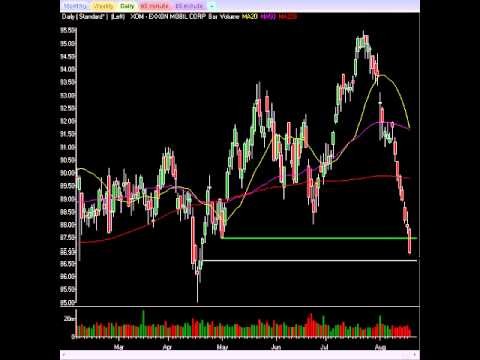There’s no bear market in sight say Dow Theory experts
Post on: 6 Сентябрь, 2015 No Comment

MarkHulbert
CHAPEL HILL, N.C. (MarketWatch) — If the stock market’s recent decline seems like deja vu all over again, it’s because it is.
In fact, according to Jack Schannep, editor of TheDowTheory.com, the market’s latest decline is the 13th since the bull market began in March 2009 in which the major market averages dropped at least 3%. The most recent drop barely satisfies, of course, with the S&P 500 Index SPX, +1.26% so far off just 3.2% on a closing basis since its September all-time high.
This longer-term context is important to keep in mind because only one of the preceding 12 pullbacks actually led to something much bigger. That was the decline that lasted from April through October in 2011, taking 19.4% off the S&P 500 and 16.8% off the Dow Jones Industrial Average DJIA, +1.47%
Notice carefully what this history means: Any skittish trader who used the occasion of every 3% pullback to bail out of stocks would have regretted his decision in 11 out of the past 12 cases.
That doesn’t mean that the current pullback won’t be the beginning of a major bear market, of course. After all, every bear market — a drop of at least 20% — starts with a 3% decline. But what this history does mean is that you need more than the mere fact of a 3% decline to justify going to cash right now.
‘We expect the next 20% move in the market to be up.’ Richard Moroney of Dow Theory Forecasts
Market-timing systems are designed to help us tell the difference between an insignificant blip in the averages and the beginning of a bear market. The oldest such system that remains in widespread use today is the Dow Theory, which was introduced over the first three decades of the 20th century in editorials in the Wall Street Journal by its editor at the time, William Peter Hamilton.
The Dow Theory’s approach to differentiating insignificant pullbacks from major declines is to place three hurdles over which the market must jump before a bear-market signal is generated. They are:
- Step 1: Both the Dow Jones Industrial Average DJIA, +1.47% and the Dow Jones Transportation Average DJT, +1.22% must undergo a “significant” correction from new highs.
- Step 2: In their subsequent “significant” rally attempt following that correction, either one or both must fail to rise above their pre-correction highs.
- Step 3: Both averages must then drop below their respective correction lows.

The market’s recent decline, at most, jumps over only the first of these three hurdles. We can’t even be certain of that much since, to clear that first hurdle, the market’s drop must be “significant.” And there is disagreement among the Dow Theorists I monitor whether the most recent decrease is sufficient.
Notice carefully, however, that the Dow Theory remains on a “buy” signal regardless of how you come down on this disagreement. That’s because, even if hurdle No. 1 has been cleared, the market still has to jump over two more. And another of Hamilton’s core principles was that the last primary signal remains in force until reversed.
That last signal, of course, was a bullish “buy” signal from several years ago.
Of the three Dow Theorists I monitor on a regular basis, Schannep has the best track record over the past decade. Though he is open to the possibility that the recent decline will turn into a bear-market signal, his hunch is that it will not. In fact, he is sticking to his target of Dow 18,550 for the bull market.
The second Dow Theorist I monitor, Richard Moroney of Dow Theory Forecasts, also remains bullish, writing that “we expect the next 20% move in the market to be up.”
The third Dow Theorist I monitor is Richard Russell, editor of Dow Theory Letters. Though he currently is bearish about the stock market, it’s unclear whether that’s because of his interpretation of the Dow Theory or for other reasons. However, Matthew Kerkhoff, the newsletter’s research director, reminded clients this week that the most recent Dow Theory signal — a bullish confirmation — occurred only a few days ago in late September.














